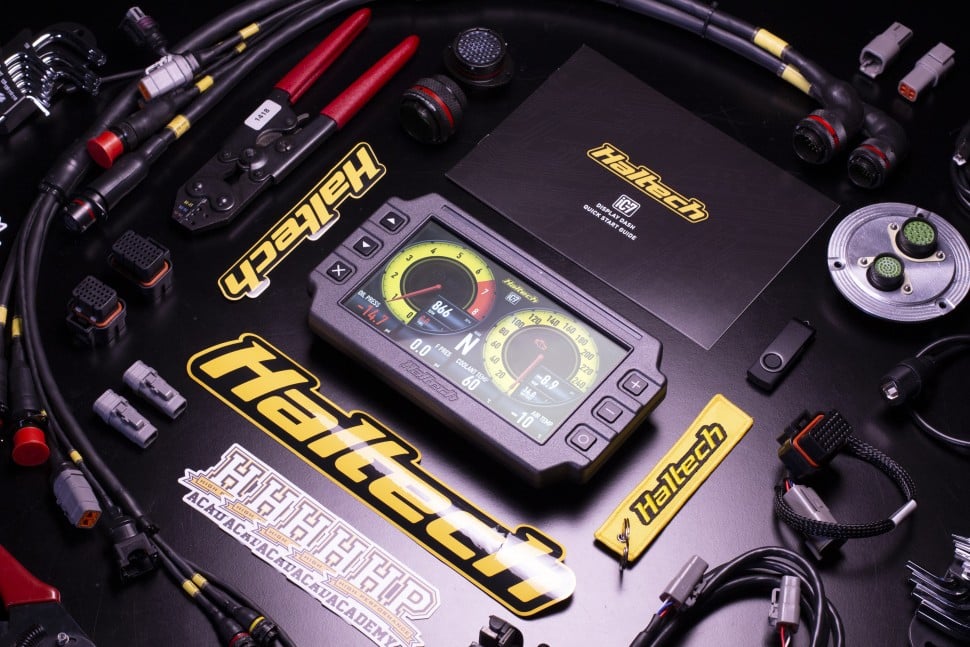| 00:00 |
Now, we know what we're trying to achieve and have some metrics to measure performance, let's dive a bit deeper into understanding the technology, as the method of obtaining the scan data is the key differentiation between scanners.
|
| 00:12 |
It should be noted that this is the current state at the time of recording this course and it's an area that's developing quickly.
|
| 00:20 |
Keep in mind that new products are always being introduced, but the core principles of the technology and fundamentals are still relevant.
|
| 00:28 |
The first method we'll discuss is what's known as photogrammetry, which is the principle that most smartphones work on.
|
| 00:36 |
In basic terms this is the process of taking multiple photos of a target object or environment from all angles.
|
| 00:42 |
The software will then analyse these photos, recognising features and using them to understand the orientation of each photo and build a 3D model.
|
| 00:52 |
Generally speaking the models resulting from photogrammetry are of a lower quality in regards to resolution and accuracy when compared to the other methods we're about to discuss.
|
| 01:03 |
This is mostly due to photogrammetry not really taking any measurements to base the 3D models off.
|
| 01:10 |
However, photogrammetry is well suited to scanning large objects or environments and this can be an advantage depending on what we're working on.
|
| 01:18 |
The exception here is high accuracy metrology grade photogrammetry where positioning targets, reference crosses and scale bars are fixed to the object before the photos are taken.
|
| 01:29 |
This way the extremely precise measurements of the reference parts can be incorporated into the analysis to increase the accuracy.
|
| 01:37 |
While this isn't going to be something we'll typically use it's still good to know what's possible as in some rare cases this is combined with the use of some other technologies to improve results.
|
| 01:48 |
Next, up is LiDAR technology, which stands for light detection and ranging.
|
| 01:52 |
This is a more recent addition to most smartphones while also being used in dedicated scanners.
|
| 01:58 |
LiDAR works on the principle of pulsing an array of laser beams at an object and waiting for each pulse to return while timing the delay.
|
| 02:07 |
This is known as time of flight.
|
| 02:09 |
By doing this it's possible to determine the distance of the object and therefore its relative position in space and its shape.
|
| 02:17 |
At least at the smartphone level LiDAR is generally considered to provide better results than pure photogrammetry and again it's great for large-scale objects and environments, but in the grand scheme of things still generally lacks resolution and accuracy.
|
| 02:33 |
Similar to LiDAR we have laser 3D scanning.
|
| 02:36 |
While many people think these are the same they are mistaken.
|
| 02:39 |
When we refer to laser 3D scanners we're generally talking about those that use triangulation rather than time of flight to determine the geometry of our target.
|
| 02:49 |
Triangulation, which we mentioned briefly when discussing field of view in the metrics module is where the light is projected onto the object surface and two cameras set a fixed distance from the projector capture the light as it bounces off the surface and from this the scanner can construct a 3D model of the object.
|
| 03:09 |
Now, laser actually stands for light amplification by stimulated emission of radiation, which we don't need to remember.
|
| 03:17 |
What's important for us is that the result is a very precise and bright beam of light at a specific wavelength.
|
| 03:23 |
The brightness of this light helps with scanning outdoors in brighter environments.
|
| 03:29 |
Without getting too deep into the weeds of physics, scanners are sensitive to how the light from the projector interacts with the object surface.
|
| 03:37 |
Dark surfaces can absorb too much of the light, shiny surfaces can cause issues with reflecting the light and transparent surfaces will allow the light to pass through.
|
| 03:47 |
We'll refer to these as troublesome surfaces. In short the intensity and wavelength of the laser helps the scanner to capture data from these surfaces.
|
| 03:57 |
Moving on we have structured light technology, which is used by most 3D scanners that we'll be interested in.
|
| 04:04 |
This is where a pattern of light is projected onto the target and triangulation is used again to observe how the light pattern from the projector falls over the surfaces and is distorted to build the 3D model.
|
| 04:17 |
The pattern is complex, looking similar to a QR code although this can vary between scanners.
|
| 04:23 |
Structured light 3D scanners are generally considered to produce very accurate high resolution models, but one of their biggest advantages is the speed and efficiency at which they capture data.
|
| 04:35 |
These strengths make structured light scanners the go-to for our uses in mechanical design for motorsport.
|
| 04:42 |
But although they're efficient, they're still less suitable for large scale scanning due to their limited field of view and depth of field while remaining small enough to be handheld.
|
| 04:53 |
Structured light scanners also do tend to struggle with troublesome surfaces, but we'll cover some workarounds for this in the practical skills section.
|
| 05:02 |
In saying that, they are generally less sensitive to external lighting conditions overall and are better in lower light environments like workshops.
|
| 05:11 |
Structured light scanners are also usually capable of capturing colour texture through the use of an extra camera whereas laser scanners typically miss out on this.
|
| 05:20 |
While this isn't really required for most design projects it can definitely be nice to have.
|
| 05:26 |
Within the structured light genre there is some more differentiation though and that's to do with the colour of light used, more specifically white or blue light from LEDs.
|
| 05:37 |
While white light technology has been around for longer and is somewhat more developed, the tighter wavelength of the blue light provides better accuracy and also helps filter out interference from ambient light.
|
| 05:51 |
Moving on we also have infrared scanners.
|
| 05:54 |
These work on the same principle as structured light though the infrared light being emitted isn't visible to the naked eye and requires the use of different cameras for detection.
|
| 06:04 |
The key benefit here is in the safe use of scanning people's faces, which isn't really of much interest to us, but they are also good for scanning shiny or dark surfaces.
|
| 06:14 |
The downside though is that they lack accuracy compared to structured light scanners.
|
| 06:20 |
So, far we've only discussed handheld non-contact systems as these are typically going to be most useful for our applications.
|
| 06:29 |
The alternatives are of course non-portable scanners like those that sit on desktops or tripod based systems, which typically use laser scanning technology.
|
| 06:37 |
Then there's contact based systems.
|
| 06:40 |
These are often referred to as CMMs , which is short for coordinate measurement machine and use a highly sensitive probe on an arm or gantry.
|
| 06:50 |
The arm has encoders at each joint, which determine the angle of each axis and therefore allows the machine to understand its exact location in space rather than relying on the digital model like other methods.
|
| 07:03 |
It should be noted though that these systems aren't typically used for motorsport design applications and do tend to be more expensive, focusing primarily on high accuracy with lower resolution for metrology and quality control.
|
| 07:19 |
In some cases though this contact probe is also sometimes combined with a laser scanning system for more functionality.
|
| 07:27 |
Further to this MRI and CT scans are a form of 3D scanning most commonly used in the medical industry, but they can also have their uses in the motorsport realm as well.
|
| 07:37 |
Rather than using point clouds or meshes, these consist of many 2D slices stacked up to create a 3D image of the object.
|
| 07:46 |
This is an expensive approach, but it does offer the advantage of being able to scan the internals of a structure, which is particularly useful for cast parts like engine blocks or cylinder heads that have internal passages for the oil and coolant.
|
| 08:01 |
There are also other scanner types using acoustic, thermal and seismic sensors, but we're getting off track now as these aren't typically of much use to us for automotive work.
|
| 08:11 |
What's important to understand is that in this module we've made generalisations about the advantages and disadvantages of different types of scanners, but the quality of the scanner, which is usually matched to its price point will also be a determining factor on the performance.
|
| 08:27 |
It should also be mentioned that there are many hybrid scanners available that make use of multiple scanning technologies, for example combining laser with structured light.
|
| 08:37 |
We'll be discussing these in a little more detail later in the course.
|
| 08:42 |
Let's take a look at the main points to remember from this module before moving on.
|
| 08:47 |
Photogrammetry and LiDAR technology are used in smartphones to achieve very usable results although the resolution and accuracy can be limited.
|
| 08:58 |
Laser scanning can offer some advantages with troublesome surfaces and bright environments.
|
| 09:03 |
It's generally accepted that structured light scanners are the most suited to mechanical design in the motorsport and automotive space.
|
| 09:11 |
While they can struggle with troublesome surfaces, the efficiency and speed at which they capture accurate data makes up for the shortcomings.
|
| 09:20 |
Structured light scanners that use blue light do provide some advantages over scanners with white light sources, however what's more important is the quality of the scanner.
|
| 09:29 |
There are a range of other scanners out there, contact or non-contact, handheld, portable or otherwise, all suited to different applications.
|
| 09:38 |
Hybrid units are also available that make use of the strength of multiple technologies like laser and structured light for example.
|





